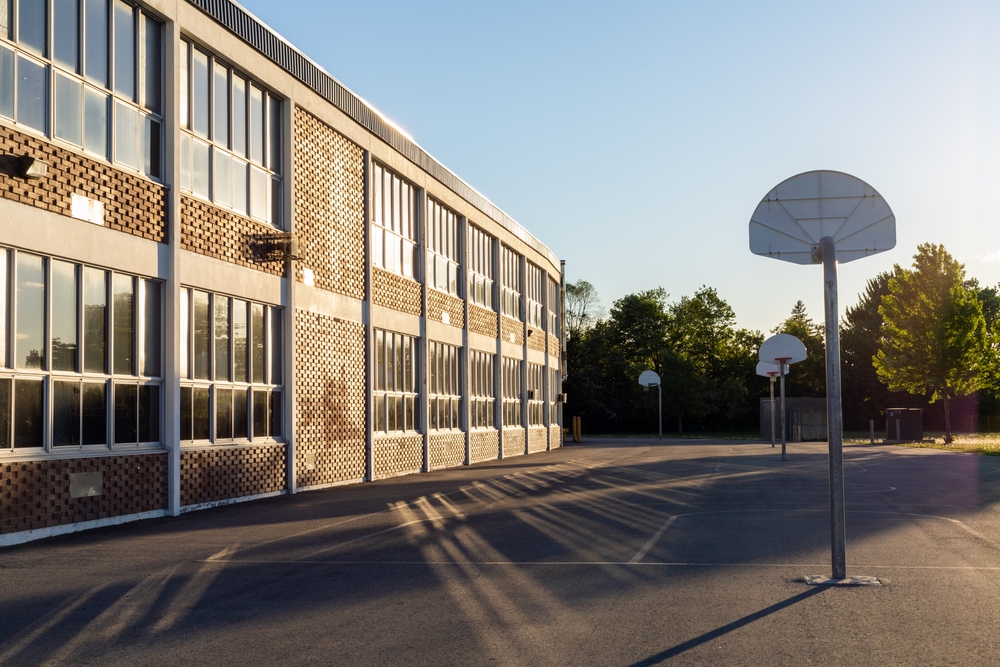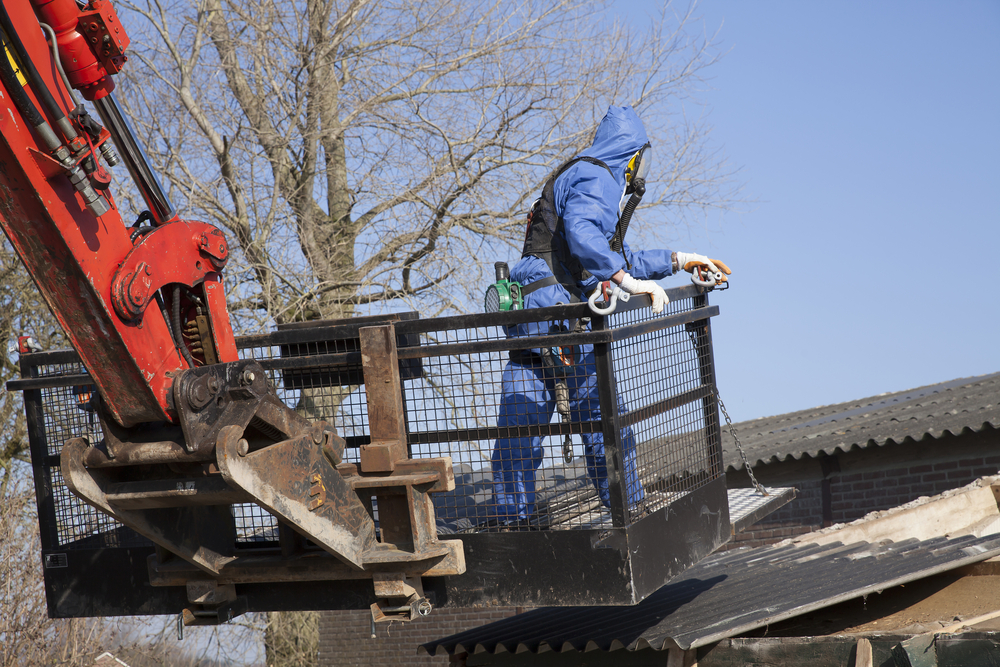
Imagine a hidden danger lurking within the walls of the schools where our children learn and play. Unfortunately, this is the reality many Melbourne schools face, where asbestos, a potentially hazardous material, is present. This blog post delves into the pressing concern of asbestos in Melbourne schools, the efforts to address the issue, and the importance of implementing proper management plans to ensure the safety of students and staff.

The potential risk of asbestos-related diseases looms large in Melbourne schools, given that many buildings constructed before 1990 contain asbestos. This situation is further exacerbated by high-risk asbestos in numerous school buildings. In line with Victoria’s occupational health standards, the Victorian government has assumed the responsibility of maintaining a safe learning environment in public schools.
Any work that could potentially disturb asbestos-containing material (ACM) must be reported to the local Asset Management Unit (AMU) by the schools. Additionally, contractors should consult the Asbestos Register (AR) before carrying out any work in a school, as the register should include any Certificates of Asbestos Removal.

Schools typically built before the 1980s often have asbestos in common areas, such as floor tiles, exterior walls, vermiculite ceilings, landfills, sprayed insulation, asbestos cement, pipe lagging, and putty around windows. Asbestos-containing materials can be found in all sorts of places within older schools. Some less common areas with high-risk asbestos include old fume cabinets in science labs, old boilers or incinerators, old fire blankets, and loose landfills used under school playgrounds.
Due to their developing lungs, children are at a higher risk of asbestos exposure than adults. Thus, to safeguard the health of students and staff, asbestos removal from these high-risk areas is of paramount importance. Plant rooms and service tunnels should be prioritized for asbestos assessment and remediation due to the potential presence of friable asbestos and asbestos fibres.
The Victorian Government invested $407 million in the state’s largest asbestos removal program between 2015 and 2020. This program led to the eliminating of all high-risk asbestos from schools by March 2016. A statewide audit conducted in March 2016 found that 497 of the 1,712 government schools inspected contained high-risk asbestos.
After removing all high-risk asbestos, steps were taken to remove asbestos that could pose a risk in the future, such as asbestos located behind the walls or eaves of older buildings. By the end of 2020, 1,287 schools had this asbestos removed.
One crucial component of the asbestos safety program was the implementation of permanent modular buildings. Modular buildings are typically constructed off-site and delivered to schools in components for assembly, reducing construction time by half and providing secure, high-quality buildings with minimal disruption.

A comprehensive School Asbestos Management Plan (SAMP) is pivotal in managing asbestos-containing materials and potential incidents. The SAMP must be kept current and accessible. This includes providing access to parents, teachers, and other faculty members.
Abatement professionals must carry out any procedure involving asbestos with the necessary expertise in the safe removal of asbestos. The principal must ensure that the SAMP is reviewed annually. They may also delegate this responsibility if they wish.
An Asbestos Register is a document that records all identified asbestos in a building. Identifying asbestos-containing materials in schools typically involves procedures like:
The Asbestos Register in schools should be reviewed and updated every five years.
General Assistants (GAs) must consult the Asbestos Register before commencing any work around the school.
It is imperative to follow safe management and removal procedures for asbestos to minimize the exposure risk. Schools must follow these steps for asbestos removal in Melbourne schools:
During asbestos removal, disposable coveralls and footwear are recommended as protective equipment. All schools in Melbourne must adhere to the regulations outlined in ‘Division 7- Removal of Asbestos’ of the OHS Regulations 2017. The Department of Education is responsible for managing the risks associated with asbestos-containing material in schools, and licensed asbestos removalists must be employed to remove high-risk asbestos-containing material.

The Victorian School Building Authority (VSBA) is vital in managing asbestos in schools and supporting removal projects. The VSBA is responsible for:
The VSBA provides comprehensive support for asbestos removal projects in Victorian schools. They have implemented an asbestos safety program and conducted Victoria’s largest asbestos removal program. Additionally, they:

By adhering to asbestos management guidelines and reporting any incidents, the school principal and staff shoulder the responsibility of protecting the school community. The school principal is responsible for:
Compliance with the OHS Regulations 2017 is mandatory, and any failure to do so is an offence that carries a penalty. WorkSafe Victoria, which is responsible for Victoria’s occupational health, enforces these penalties to ensure the safety of the school community.

Recognizing and reporting asbestos-related incidents is vital for ensuring the safety of students and staff and addressing potential hazards. Indications of asbestos exposure may include shortness of breath, persistent cough, chest pain or tightness, crackling sound in the lungs when breathing, presence of blood in sputum, wheezing, extreme fatigue, and clubbing of nails. In case of asbestos exposure in a school setting, it is recommended to document the incident in a WHS Incident report, obtain approval from the Principal, retain a copy for personal records, and consider undergoing a lung screening.
The emergency hotline number for asbestos-related incidents is 1300 133 468. It is important to report any such incidents to ensure timely action and protect the health of those affected.

Raising awareness and promoting a safe school environment necessitates educating students and teachers on asbestos safety. Asbestos is a heat-resistant mineral that can potentially cause health issues, including cancer. Therefore, students and teachers must be cognizant of the potential risks of asbestos exposure in school environments.
Teachers can integrate asbestos safety education into their curriculum by:
Furthermore, it is important to ensure that students and teachers in schools with asbestos are aware of the risks of asbestos exposure, are familiar with the school’s Asbestos Management Plan (AMP), understand how to report damaged materials, and are familiar with safe operating procedures. Collaborating with school administrators is also recommended.
Schools have access to various resources and support for asbestos management, including government assistance, professional advice, and educational materials. The Victorian government provides resources such as the Schools Asbestos Management Plan (SAMP) and guidance for efficiently managing asbestos-containing school materials. They also have a comprehensive school asbestos management plan available on their website for reference.
Professional advice regarding asbestos issues is available to schools in Melbourne from the Victorian School Building Authority and the Department of Education and Training. Educational materials available for teaching about asbestos safety in schools include:
Additionally, the Victorian Government has allocated funds to remove asbestos in schools through programs such as the Victorian School Asbestos Removal Program.
In conclusion, asbestos in Melbourne schools is a pressing concern requiring a comprehensive management and safety approach. From government initiatives to school-level management plans, the collaboration of various stakeholders is essential to ensure the health and well-being of students and staff. By educating the school community, implementing proper safety measures, and utilizing available resources, we can work together to create a safer learning environment for all.
Asbestos exposure can cause a range of serious health issues, including asbestosis, lung cancer, mesothelioma, colon cancer and other non-malignant lung diseases. Every year in Australia, hundreds of people die from asbestos-related diseases, making asbestos a very serious health risk.
The cost of asbestos removal depends on various factors, including the location and size of the area where asbestos is present, the type of asbestos-containing material, the complexity of the removal process, and regional labor rates. For example, removing asbestos from pipe insulation or flooring can be more complex than from other areas. A homeowner can expect to pay anywhere from $1,200 to $3,000 on average for asbestos removal, with larger or more complicated jobs potentially costing significantly more. It’s crucial to hire a licensed and experienced professional for this hazardous task to ensure safety and compliance with local regulations.
Posted By: Tommy Clappers
Leave a Reply